Case studies
Updated 29 July 2019
Listed below are case studies of successful community-led schemes to improve local broadband. The case studies are listed in order of models, from model 2 (buy into existing commercial rollout) to model 6 (community owned and operated).
A number of communities have already benefited from partnerships with BT. Examples can be found at the following link:
communityfibre.bt.com/case-studies
Table of case studies
| Case Study | Case Study Name | Model Type | Project overview |
|---|---|---|---|
| 1 | Preston Village | Model 2: Buy into existing commercial rollout | BT and local community joint funded a cabinet upgrade to deliver Fibre to the Cabinet (FTTC) to 130 premises |
| 2 | Coleorton Hall Estate | Model 2: Buy into existing commercial rollout | BT and local community joint funded a new fibre cabinet as previously residents were connected by ‘exchange only’ lines |
| 3 | Fell End | Model 2: Buy into existing commercial rollout | A community built - with some public funding support - 15km FTTP broadband network connecting 58 deeply rural premises, adopted by BT and incorporated into their network |
| 4 | Cotwalton Community Broadband | Model 3: Buy into publicly funded rollout | The Staffordshire village of Cotwalton used BT’s Community Fibre Partnership to join the existing publicly funded rollout to aim to serve up to 14 premises using Fibre to the Premises (FTTP) technology |
| 5 | Cybermoor, South Tyne Valley | Model 4: Bespoke solution, supplier owned and operated | The South Tyne Valley is a remote area and this Pilot project aimed to assess the suitability of social investment and loans for broadband deployment |
| 6 | Herefordshire Community Networks | Model 5: Community owned, supplier operated | Community Fibre to the Premises (FTTP) scheme covering an initial 28 properties, mixed residential and small business, financing 50/50 from community shares and connection vouchers |
| 7 | Kelston Community Broadband | Model 5: Community owned, supplier operated | Rural parish of mixed residential/business properties, adjacent to Bath city boundary and three miles from the city centre |
| 8 | Perseverance Works | Model 5: Community owned, supplier operated | Fibre to the Premises (FTTP) network in a privately owned area of east London, a stone’s throw from the Old Street Silicon Roundabout |
| 9 | Tove Valley Broadband | Model 6: Community owned and operated | A community group in Northumberland run since 2003 to improve local broadband |
| 10 | Broadband for the Rural North (B4RN) | Model 6: Community owned and operated | B4RN is a Fibre to the Premises (FTTP) network run by a dedicated local team with the support of landowners and volunteers in North West England |
Model 2 – Buy into existing commercial rollout
Preston village case study
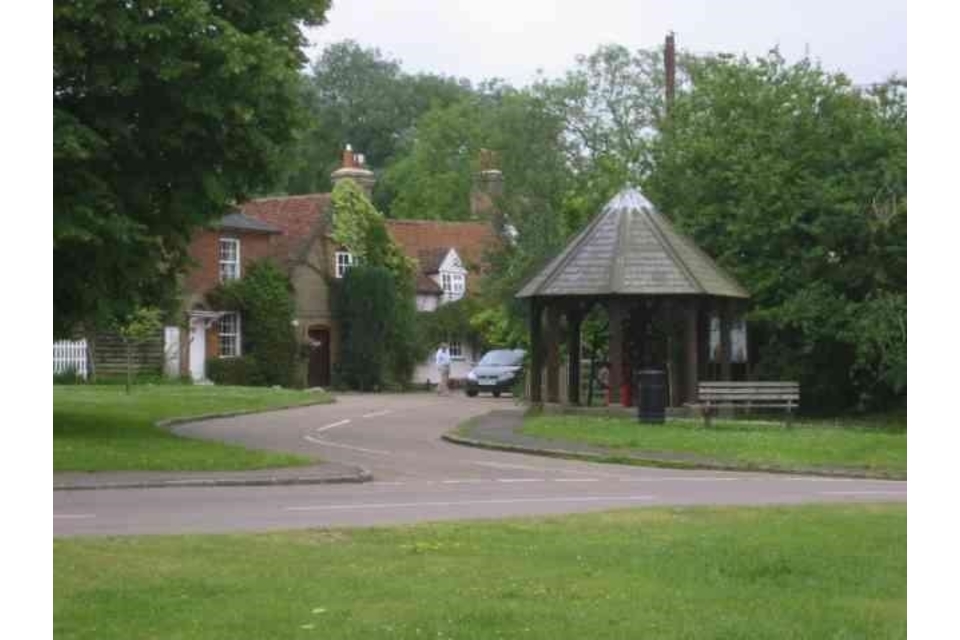
| Name | Preston village, Hertfordshire |
| Overview | BT and local community joint funded a cabinet upgrade to deliver FTTC to 130 premises: the whole village |
| Location | Preston, Hertfordshire |
| Technology employed | Fibre to the Cabinet (FTTC) |
| Number of premises covered – initial estimate | 130 |
| Cost (project total) – initial estimate | £38,000 |
| Cost (per premises passed) – initial estimate | £292 |
| Number of premises covered – finalised scheme | 130 |
| Cost (project total) – finalised scheme | £38,000 |
| Cost (per premises passed) – finalised scheme | £292 |
| Time taken from initial concept to successful fund raising | Several weeks |
| Time taken from successful fund raising to first live customers | Around 12 months |
| Type of ownership model(s) (1-6) | 2 |
| Funding source(s) | Gap funding model: Openreach covered the cost according to their commercial model & the community raised £38,000 to cover the cost of their share of the deal |
| Arrangements/costs for wayleaves | N/A |
| Legal structure of community group | The community set up a legal entity so as to contract with Openreach |
| Feasibility work undertaken by | Openreach |
| Website | www.communityfibre.bt.com |
| Contact | community.fibre@bt.com |
| Major lesson(s) learnt | Fundraising was straightforward in the community as everyone realised the clear benefits. Chose BT as it enabled choice of any service provider from the new infrastructure |
Coleorton Hall Estate case study

| Name | Coleorton Hall Estate |
| Overview | BT and local community joint funded a new fibre cabinet as previously residents were connected by ‘exchange only’ lines |
| Location | Coleorton, Leicestershire |
| Technology employed | Fibre to the Cabinet (FTTC) |
| Number of premises covered – initial estimate | 150 |
| Cost (project total) – initial estimate | Not disclosed |
| Cost (per premises passed) – initial estimate | Not disclosed |
| Number of premises covered – finalised scheme | 150 |
| Cost (project total) – finalised scheme | Not disclosed |
| Cost (per premises passed) – finalised scheme | Not disclosed |
| Time taken from initial concept to successful fund raising | Around 3 months |
| Time taken from successful fund raising to first live customers | 12 months |
| Type of ownership model(s) (1-6) | 2 |
| Funding source(s) | Gap funding model: Openreach covered the cost according to their commercial model & the benefitting community raised the remainder, that was residents of the Coleorton Hall estate, Church Town and Farm Town |
| Arrangements/costs for wayleaves | N/A |
| Legal structure of community group | Via a residents association |
| Feasibility work undertaken by | Openreach |
| Website | www.communityfibre.bt.com |
| Contact | community.fibre@bt.com |
| Major lesson(s) learnt | ‘Some providers were reluctant to engage with us or offered unsuitable solutions. In addition, some of the solutions had ongoing maintenance and communal equipment costs associated. We felt connecting to the Openreach network offered the best option and value for money, as it was a future proof solution, as well as giving the community access to multiple service providers.’ Quote from Jon Wohlters, Coleorton Hall resident |
Fell End case study
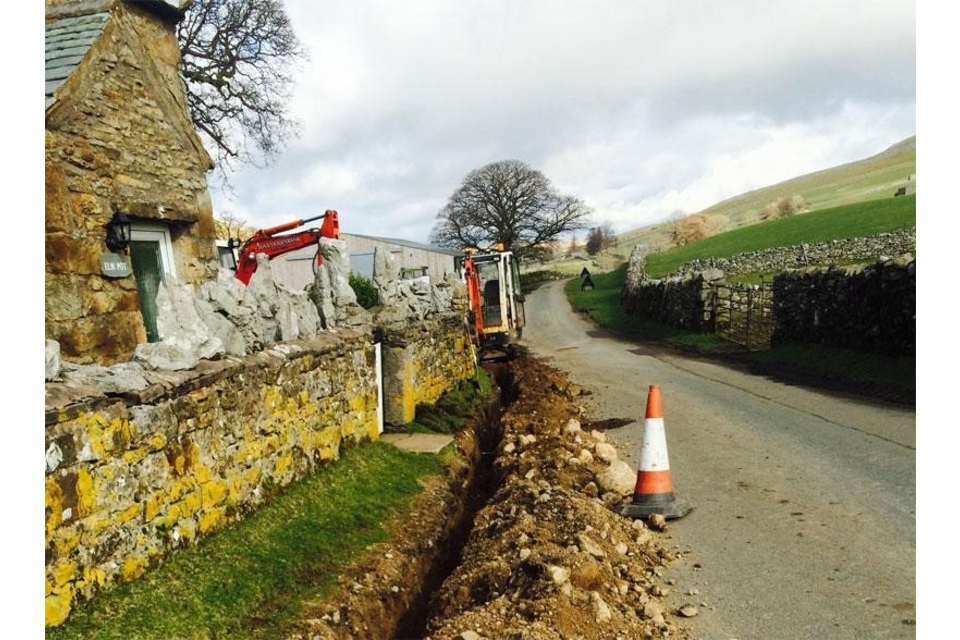
| Name | Fell End broadband |
| Overview | A community ‘build and benefit’ 15km FTTP broadband network connecting 58 deeply rural premises |
| Location | Ravenstonedale, South East Cumbria |
| Technology employed | Fibre to the premises (FTTP) |
| Number of premises covered – initial estimate | 58 |
| Cost (project total) – initial estimate | £88,000 |
| Cost (per premises passed) – initial estimate | 1500.00 |
| Number of premises covered – finalised scheme | 58 |
| Cost (project total) – finalised scheme | £88,000 |
| Cost (per premises passed) – finalised scheme | £1,517 |
| Time taken from initial concept to successful fund raising | 2 years |
| Time taken from successful fund raising to first live customers | Feasibility work began 2010, and the first connection went live July 2014. The build phase took just less than one year |
| Type of ownership model(s) (1-6) | 2 – BT own and operate the network, which was deployed at no charge with in trenching and a duct network provided by the community. The civil engineering to create the trench was partly as a result of civils procured with BDUK funding (in addition to the funding sources listed below) as well as additional build activity provided as a benefit in kind by the community |
| Funding source(s) | £88,000 in total: £26,000 Princes Countryside Fund; £53,000 Rural Community Broadband Fund (RCBF) (now closed); £2,000 Holhird Trust; £1,000 Talktalk Digital Heroes; £6,000 community contributions; Free wayleaves also supplied by local landowners |
| Arrangements/costs for wayleaves | £1,500 – many landowners signed wayleaves at negligible cost to receive services |
| Legal structure of community group | Project led and managed by the community with assistance from Ravenstonedale Parish Council as the accountable body |
| Feasibility work undertaken by | The local community, who met in the local pub in 2010 to map out the fibre route |
| Website | www.ravenstonedale.org |
| Contact | ravenstonedale.org/contact |
Model 3 – Buy in to existing publicly funded rollout
Cotwalton Community broadband case study
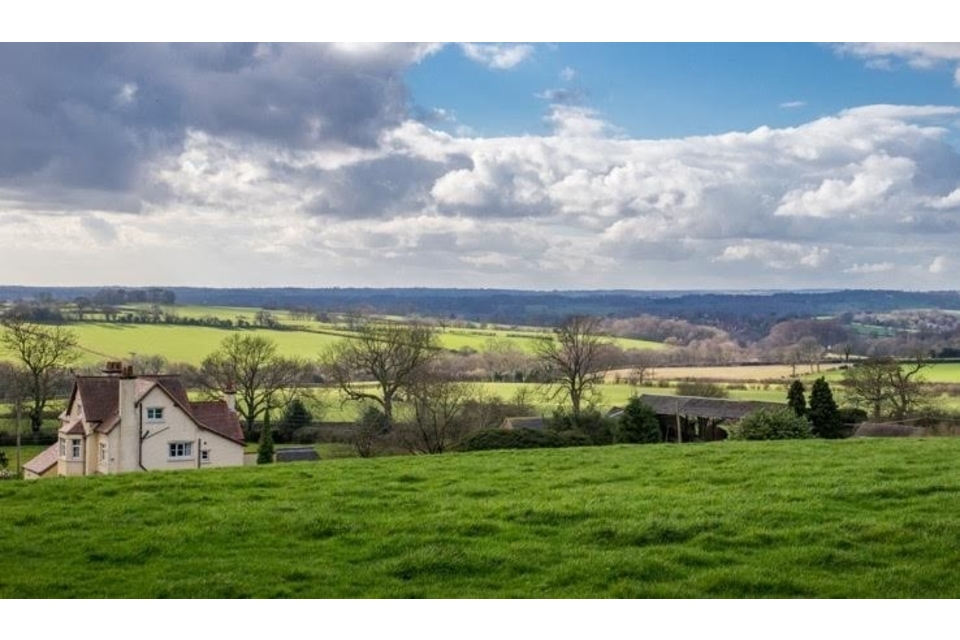
Photograph by Brian Scott
| Name | Cotwalton Community Broadband Project |
| Overview | The Staffordshire village of Cotwalton used BT’s Community Fibre Partnership to join the existing publicly funded rollout to aim to serve up to 14 premises using FTTP technology |
| Location | Cotwalton, near Stone, Staffordshire |
| Technology employed | Fibre to the premises (FTTP) |
| Number of premises covered - initial estimate | 12-14 |
| Cost (project total) - initial estimate | Openreach CFP quotation £29,154 |
| Cost (per premises passed) - initial estimate | Assuming 14 premises £2,081 |
| Number of premises covered - finalised scheme | Subject to detailed survey |
| Cost (project total) - finalised scheme | Managed in line with current BDUK framework contract |
| Cost (per premises passed) - finalised scheme | Managed in line with current BDUK framework contract |
| Time taken from initial concept to successful fund raising | 3-4 months |
| Time taken from successful fund raising to first live customers | Estimated 12 months |
| Type of ownership model(s) (1-6) | Model 3 - Community bought in, via BT’s Community Fibre Partnership, to an existing public rollout being run by Superfast Staffordshire. BT will own and maintain the asset. |
| Funding source(s) | 50% Community gap funding - £14.5k; 50% Superfast Staffordshire gap funding - £14.5k + BT contribution |
| Arrangements/costs for wayleaves | Yet to be established |
| Legal structure of community group | None. Each resident provided a cheque to the County Council for their contribution. Doing away with the need to form a legal entity, this was seen as a real benefit for the community. |
| Feasibility work undertaken by | Openreach |
| Website | www.superfaststaffordshire.co.uk |
| Contact | Project: Paul Chatwin (paul.chatwin@staffordshire.gov.uk); Community: Brian Scott (brianscotty@me.com) |
| Major lesson(s) learned | The Local Authority had developed an approach, where Superfast Staffordshire could make a financial contribution to the Community Fibre Partnerships project, as long as the community contracted it via Superfast Staffordshire’s project. This served to ensure state aid compliance, reduced the community contribution by 50% and avoided having to set up a legal entity to contract with BT. This approach also avoided the need for the community to pay £2,500 plus VAT upfront for a detailed FTTP survey |
Model 4 – Supplier owned and operated
Cybermoor, South Tyne Valley case study

| Name | Cybermoor, South Tyne Valley |
| Overview | The South Tyne Valley is a sparse, remote area and the project aimed to assess the suitability of social investment and loans for broadband plus the ability to lower deployment costs by using local contractors |
| Location | West Northumberland |
| Technology employed | Fibre to the Home, Fixed Wireless |
| Number of premises covered – initial estimate | 300 |
| Cost (project total) – initial estimate | £551,656 |
| Cost (per premises passed) – initial estimate | £1,839 |
| Number of premises covered – finalised scheme | 297 |
| Cost (project total) – finalised scheme | £551,656 |
| Cost (per premises passed) – finalised scheme | £1,922 |
| Time taken from initial concept to successful fund raising | 12 months |
| Time taken from successful fund raising to first live customers | 1 month |
| Type of ownership model(s) (1-6) | 4 – Cybermoor provided a broadband service for the local community, and continue to own and operate the network |
| Funding source(s) | Total funding £551,656; £375,126 BDUK grant as part of Market Test Pilot programme (68%); £110,331 Private funding – Cybermoor and Eurona (20%); £27,583 Social Investment Business funding (5%); £22,066 Local donations (4%); £11,033 Community shares (2%) |
| Arrangements/costs for wayleaves | Most landowners provided free wayleaves as they recognised the benefits for themselves and the wider community |
| Legal structure of community group | Co-operative |
| Feasibility work undertaken by | Cybermoor Services |
| Website | www.cybermoorenetworks.org.uk |
| Contact | Daniel Heery |
| Major lesson(s) learnt | Social investment and loans were difficult to obtain. Local contractors worked efficiently and flexibly to keep the costs of network build low in one of the most sparsely populated areas of England. State aid approval process was complex and challenging |
Model 5 – Community owned; supplier operated
Herefordshire Community Networks case study
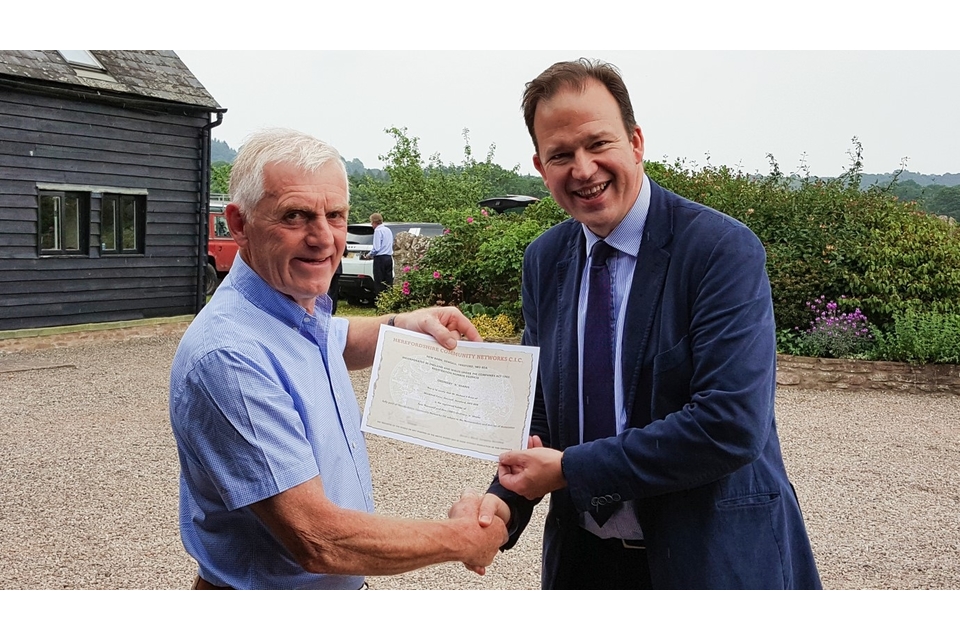
Jesse Norman, MP for South Herefordshire and Chair DCMS Select Committee, awards certificate to Mike Price, local farmer, for his working in digging the community network
| Name | Herefordshire Community Networks CIC |
| Overview | Community FTTP scheme covering an initial 28 properties, mixed residential and small business, financing 50/50 from community shares and connection vouchers |
| Location | Sparsely rural hamlets of Dewsall and Callow, 5 miles from centre of Hereford city, covering 500 hectares |
| Technology employed | 100% underground FTTP |
| Number of premises covered – initial estimate | 28 connected, 44 passed – 65% take-up at start |
| Cost (project total) – initial estimate | £1,950 per premise connected |
| Cost (per premises passed) – initial estimate | £1,275 |
| Number of premises covered – finalised scheme | Expected to be 44 |
| Cost (project total) – finalised scheme | £66,000 |
| Cost (per premises passed) – finalised scheme | £1,500, all connected |
| Time taken from initial concept to successful fund raising | 12 months |
| Time taken from successful fund raising to first live customers | 3 months |
| Type of ownership model(s) (1-6) | 5 – The infrastructure is owned by the community, but operated by the supplier due to a requirement of the connection voucher scheme, where build can only be undertaken by a supplier who operates the network for minimum 6 months. The community interest company has the option to take over the operation of the network once this period is over |
| Funding source(s) | £66,000 funding total. £27,000 SMEs in scheme awarded nine BDUK connection vouchers from Digital Birmingham. £39,000 Balance raised by 39 community shareholders (£1,000 each), which are SEIS eligible (see funding option page) |
| Arrangements/costs for wayleaves | Led by Duchy of Cornwall as major landowner, all wayleaves were granted for the community scheme for payment of a peppercorn rent if demanded |
| Legal structure of community group | Community Interest Company |
| Feasibility work undertaken by | Wansdyke Ltd |
| Website | www.hereford-cic.net |
| Contact | David Bland, Company Secretary, 01432 617017 |
| Major lesson(s) learnt | Backhaul (BT) was a major problem. Initial installation dates were missed, then pushed back by up to four months. Major petitioning required on BT Openreach who responded positively, and final delay was under two months |
Kelston Community Broadband case study

Kelston Park, Palladian Mansion now used a multi-tenanted office accommodation
| Name | Kelston Community Broadband |
| Overview | Parish led FTTP scheme in implementation |
| Location | Rural parish of mixed residential/business properties, adjacent to Bath city boundary and 3 miles from city centre |
| Technology employed | 100% underground FTTP |
| Number of premises covered – initial estimate | 75 residential properties and 25 businesses |
| Cost (project total) – initial estimate | £120,000 |
| Cost (per premises passed) – initial estimate | £1,200 |
| Number of premises covered – finalised scheme | 100 |
| Cost (project total) – finalised scheme | £120,000 |
| Cost (per premises passed) – finalised scheme | £1,200 |
| Time taken from initial concept to successful fund raising | 12 months to date |
| Time taken from successful fund raising to first live customers | Not yet implemented |
| Type of ownership model(s) (1-6) | 5 – community owned but not operated. Parish will own the network, CIC will provide management and operations via subcontractors |
| Funding source(s) | £120,000 funding total |
| Current expectation is that the split will be: | Roughly £48,000 from Connecting Devon and Somerset USC vouchers (see funding options); Roughly £72,000 from Public Works Loan Board loan (see funding options) |
| Arrangements/costs for wayleaves | Local landowners, granted for peppercorn rent |
| Legal structure of community group | Community Interest Company |
| Feasibility work undertaken by | Wansdyke Ltd |
| Website | www.kelston-community.net |
| Contact | David Bland, Company Secretary, 01225 945052 |
| Major lesson(s) learnt | Difficulties getting good information from local authority. MP support invaluable |
Perseverance Works case study
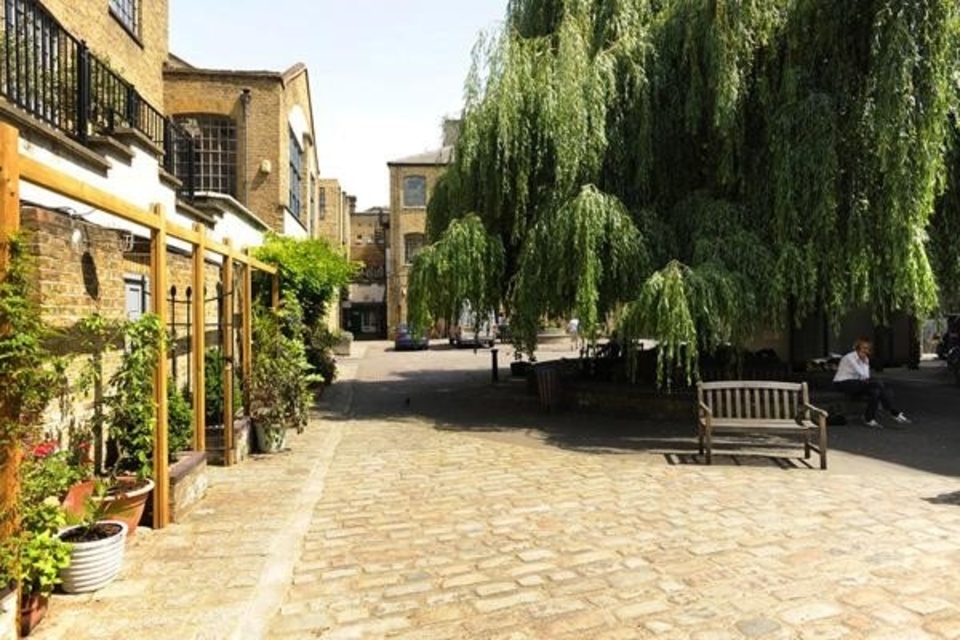
| Name | Perseverance Works |
| Overview | FTTP network in a privately owned area of east London, a stone’s throw from the Old Street Silicon Roundabout |
| Location | London, close to Old Street |
| Technology employed | Fibre to the Premises - FTTP |
| Number of premises covered – initial estimate | 62 businesses |
| Cost (project total) – initial estimate | £90,000 |
| Cost (per premises passed) – initial estimate | £1,452 |
| Number of premises covered – finalised scheme | 62 businesses – with considerable room for expansion |
| Cost (project total) – finalised scheme | £90,000 |
| Cost (per premises passed) – finalised scheme | £1,452 |
| Time taken from initial concept to successful fund raising | Two and a half years taken from initial idea to successfully having a team install first lines |
| Time taken from successful fund raising to first live customers | Four months from funding to first adopters going online |
| Type of ownership model(s) (1-6) | 5 – Perseverance Works build and own the infrastructure, while a supplier – Fibre Options – is given access to the infrastructure in return for operating the network |
| Funding source(s) | Super Connected Cities voucher scheme |
| Arrangements/costs for wayleaves | No cost or need for wayleaves – owned by the Perseverance Works Freeholders Ltd |
| Legal structure of community group | The project was run through the board of Perseverance Works Freeholders Ltd |
| Feasibility work undertaken by | Mike Kiely & Perseverance Works Freeholders Ltd – Tender document released can be viewed here |
| Website | www.perserveranceworks.co.uk |
| Contact | pk@perseveranceworks.co.uk |
| Major lesson(s) learnt | Wayleaves arrangements can be a major barrier when dealing with absent landlords for many neighbouring tenants |
Model 6 – Community owned and operated
Tove Valley case study
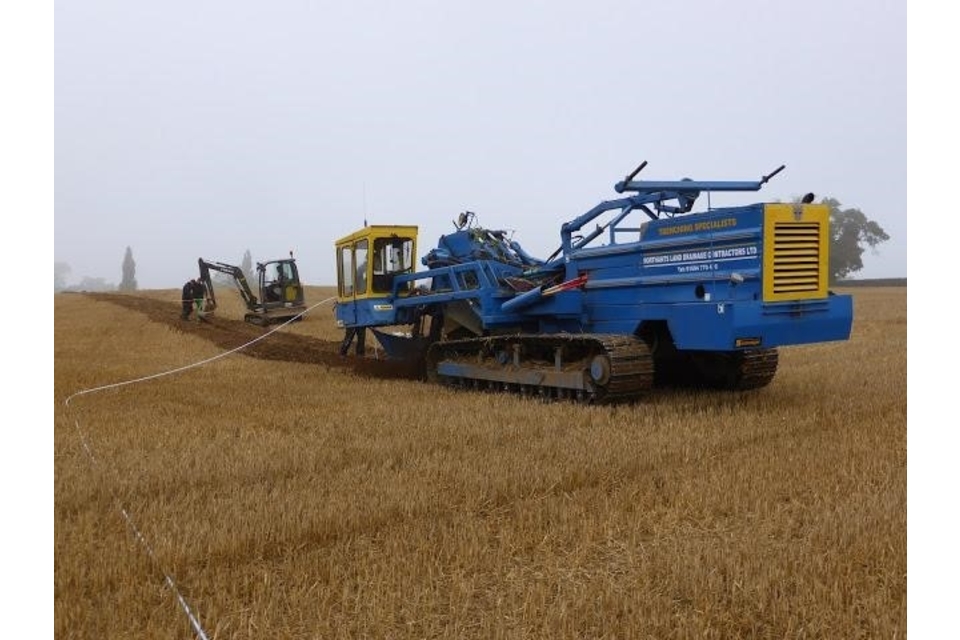
| Name | Tove Valley Broadband |
| Overview | A community group in Northamptonshire run since 2003 to improve local broadband |
| Location | Upper Tove Valley, Northamptonshire |
| Technology employed | Primarily fixed wireless (FWA), although a Fibre to the premises (FTTP) is also available on request |
| Number of premises covered – initial estimate | 450 |
| Cost (project total) – initial estimate | £250,000 |
| Cost (per premises passed) – initial estimate | £555 |
| Number of premises covered – finalised scheme | 650 |
| Cost (project total) – finalised scheme | £270,000 |
| Cost (per premises passed) – finalised scheme | £385 |
| Time taken from initial concept to successful fund raising | 2 years |
| Time taken from successful fund raising to first live customers | 4 months |
| Type of ownership model(s) (1-6) | 6 – Community owned and operated |
| Funding source(s) | £278,000 approximate total funding; £170k loans raised from the communities; £108k grant from the European Agricultural Fund for Rural Development and BDUK via the Rural Community Broadband Fund (RCBF) (now closed) |
| Arrangements/costs for wayleaves | £1400 and £140/year covering 12.5km |
| Legal structure of community group | Abthorpe Broadband Association Limited (ABbA) is a not-for-profit limited by guarantee community company |
| Feasibility work undertaken by | Abthorpe Broadband Association Limited |
| Website | www.tovevalley.com |
| Contact | Via website |
| Major lesson(s) learnt | Limitation of number of frequencies available. Level of expertise and perseverance required for project submission and execution |
B4RN case study

| Name | Broadband for the Rural North (B4RN) |
| Overview | B4RN is a professional fibre to the premises broadband network, registered as a non-profit community benefit society, and run by a dedicated local team with the support of landowners and volunteers. Basic offer is 1,000Mbps symmetrical FTTP broadband to every property in our coverage area within North West England, cost £150 connect and £30 per month. 10Gbps is also available to all properties |
| Location | North West England |
| Technology employed | Fibre to the premises (FTTP) |
| Number of premises covered – initial estimate | 3,500 |
| Cost (project total) – initial estimate | £3.5m |
| Cost (per premises passed) – initial estimate | £1,000 |
| Number of premises covered – finalised scheme | 13,000 |
| Cost (project total) – finalised scheme | £7.8m |
| Cost (per premises passed) – finalised scheme | £600 |
| Time taken from initial concept to successful fund raising | ~1 year to build start. Project ongoing as parishes added and each is self-funded |
| Time taken from successful fund raising to first live customers | B4RN were set up in December 2011; build started in March 2012, first connections October 2012, as at 1/7/16 ~2,000 properties had been connected |
| Type of ownership model(s) (1-6) | 6 – community owned and operated |
| Funding source(s) | Funding raised from benefiting communities, either through community shares or community loans. £4.24m raised up to 31/6/16. Also benefitted from free wayleaves from landowners in the communities and from free trenching done by local volunteers (who are then rewarded in shares) |
